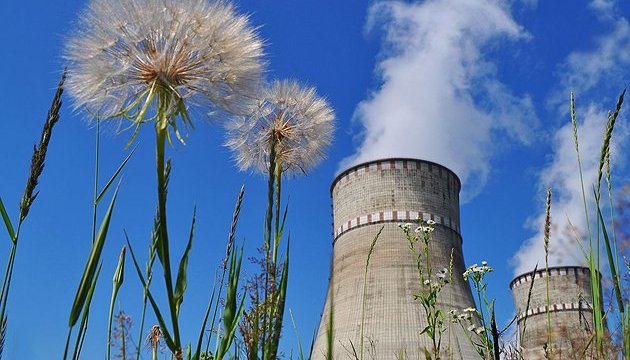УДК 553.04:621.039 (477) • Issue 3 (31) / 2020 • 90-99 pages
Yatsenko V.G., Zemskov G.A.
Yatsenko V.G., Ph.D. (Geol), Leading Researcher, State Institution «The Institute of Environmental Geochemistry of National Academy of Sciences of Ukraine», https://orcid.org/0000-0002-8113-5702, vgyatsenko@gmail.com
Zemskov G.A., Researcher, State Institution «The Institute of Environmental Geochemistry of National Academy of Sciences of Ukraine»
Abstract
Against the background of the conceptual approach to the mineral resource problem, the concept of “strategic mineral resources” is generally characterized in terms of the leading factor in the mineral resource policy at the State level. The essence of this category of mineral resources and its pivotal position in the general scheme for solving the problem are revealed. It is emphasized that the problem of mineral resources is predetermined by a constantly existing contradiction between the vital necessity of the systematic consumption of mineral resources by a Human (community, state) and the restrictive access to them. The object of study is formulated by the authors of the work as the “Mineral Resource Policy of the State”, and the subject of the study is “Strategic Mineral Resources as the most significant part of the consumed mineral resources of the nation, considered as the leading factor in the mineral resource policy”. Consideration of the mineral resource policy on the example of a number of countries (USA, China, Russia, EU countries, Canada, Japan, etc.) shows that, although each of them is unique in this sense and has its own priorities, there are, at the same time, some similarities in understanding this problem and the ways to solve it. Herein lies a number of provisions, the analysis of which allows us to state that they represent the largest elements of efficiency (“tools”) of the mineral resource policy of the “advanced” States which were developed in the process of practical activity. The studies show that the “decisive link” here is formed by the provisions related to the notion “strategic” in respect of certain types of mineral raw materials, as well as their “criticality” in terms of “supply risk” and “vulnerability from limited supply” from foreign sources. Thus, based on these empirical conclusions, it is possible to designate a “strategic line” and the main steps in solving the mineral resource problem. The decisive factor in this case, as the authors believe, is the correct allocation of the “strategic” status to the most important part of the mineral resources consumed by the nation, which allows us to create on this basis a high-ranking instrument of mineral resources policy.
Key words: strategic mineral resources, critical mineral resources, mineral resources policy.
Article
Reference
- Bezhanova M.P., Bezhanov S.K. (2007), M: TOV «Heoinformmark». 384 p.
- Haletski L.S., Cherniyenko N.M. (2016), Materialy Tretoyi mizhnarodnoyi naukovo- praktychnoyi konferentsyy «nadrokorystuvannya v Ukrayini. Perspektyvy investuvannya» (4-7 zhovtnya 2016 r., M. Truskavets). K .: DKZ. P. 44-50.
- Hurskyy D.S. (2008), Lviv: ZUKTS, 192 p.
- Yeromin N.I. Stratehichne i defitsytne mineralna syrovyna (2011), Avaible at: http://geo.web.ru/db/msg.html?mid=1186049&uri=eremin.html
- Kalinin YE.P. (2008), Visnyk Kolskoho naukovoho tsentru RAN, №4. P.13-19.
- Kotarbinskyy T. Traktat pro khoroshu robotu (1975) – M .: «Ekonomika»,. 271p.
- Kryvtsov A.I., Benevolskiy B.I., Blinova YE.V. (2007). Vitchyznyana heolohiya. №3. pp. 57-63.
- Kulish O.O., Sorokin A.P., Yatsenko V.G. (2009). K: LOHOS, 77 p.
- Normatyvno-pravove rehulyuvannya nadrokorystuvannya (2012), H. I. Rudko, O. P. Myrhorodskyy, M. M. Kurylo, O. A. Lahoda. K.: Hiperion. 254 p
- Rudko H.I. Zemlelohiya. (2009), K: Akadempres. 512 p.
- V. P. Yakutseny, B. I. Benevolskiy, A. I. Kryvtsov (2007), Sankt-Peterburh: VNYHRY. 230 p.
- Yatsenko V.H., Zemskov G.O. (2017). K .: DKZ, 2017. T.1. pp. 24-30.
- Yatsenko V.G., Zemskov G.O. (2018).K .: DKZ. T.1. pp. 249-254.
- Yatsenko V.G., Zemskov G.O. (2019). K .: DKZ. T.1. pp. 61-66.
- Graedel T.E. et.al (2012). Environ. Sci. Technol. Vol. 46. № 2. pp. 1063–1070.
- Haglund D.G. (1984), Resour. Policy. Vol. 10, № 3. pp. 146–152.
- Simandl G.J., Akam C., Paradis S. (2015) Avaible at:: http://cmscontent.nrs.gov.bc.ca/geoscience/PublicationCatalogue/Paper/BCGS_P2015-03-01_Simandl.pdf
- Coulomb, R., et al. (2015), OECD Environment Working Papers, No. 91, OECD Publishing, Paris, Avaible at:.http://www.lse.ac.uk/GranthamInstitute/wp-conent/uploads/2015/11/OECD_minerals_paper_Coulomb_et_al.pdf
